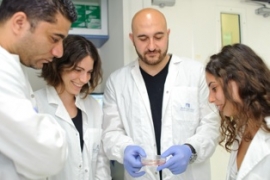After three and half years of research, Professor Jacob Hanna of the Weizmann Institute in Rehovot has succeeded in growing a mouse embryo without a womb for the first time ever. While there have been attempts in the past, this is the first time that the embryo was able to fully develop its organs and tissues. Out of 19 days of full term pregnancy for mice, the embryo lasted 11.5 days, a celebration in itself for the first third of development complete – especially with what started as a few cells in a vial.

At this phase in most fertility trials, the embryo is implanted into a womb, a crucial stage for any developing fetus, yet Hanna finally got the formula right to create a womb-like space, without the womb.
Hanna says, “Our embryo attained record test-tube longevity – 11.5 days – but was not able to survive beyond that because of its size. Beyond a certain size and mass, the embryo could no longer receive the substances it requires via diffusion in the liquid surrounding it. In the womb, it receives them through the mother’s blood vessels, which reach even the most interior cells. Therefore, only if we succeed in imitating the flow of blood, like the placenta does, will it be possible to maintain a full pregnancy outside the womb.”
Of course, there are plenty of ethical implications for growing an embryo outside a womb. Not only for organ transplants, the process also opens a potential for two men to create a child together, sans womb.
“Now that we have a system exemplifying the possibility of growing a mouse embryo, with its diverse organs, we can also consider growing human embryos until this stage, in order to use their organs – heart, pancreas, kidney – for transplants in those who need them.”








